Sunflower Seeds Nutrition
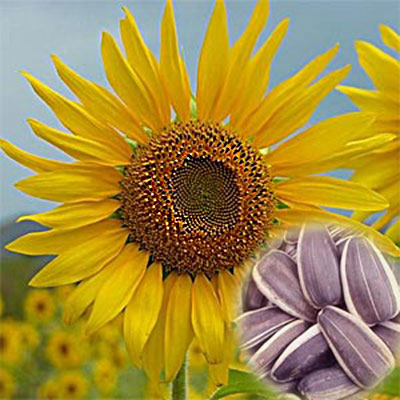
It is a plant that loves the sun. The majestic height of sunflower plant, broad green leaves, enormous bright yellow flower head, and the petals - every part of the sunflower is admirable. If summer is the season to treat sunflower as a beloved icon, autumn is the time when sunflower seeds make for tasty snacks for people and songbirds alike, which justifies noticeable increase in demand for sunflower oil and seeds.
Planting sunflower seeds is in full swing in the Sunflower State, Kansas, USA to help meet the demand for sunflower oil and seeds. What makes sunflower seeds so very popular? More and more people realize nutritional benefits of sunflower seeds. A handful of sunflower seeds eaten raw or roasted provide many benefits for a healthy body and a sound mind.
Sunflower seeds nutrition
Sunflower seed is the fruit of the sunflower, whose botanical name is Helianthus annuus, helia for sun and Anthus for flower. The sunflower seeds are dark gray and green in color and encased in an oval black shell. They have a slight nutty taste and a tender texture.
Sunflower seed is regarded as a natural nutritional pack. Healthy unsaturated fats, protein and fiber, plus important nutrients like vitamin E, selenium, copper, zinc, folate, iron and phytochemicals come wrapped up in the small seed only about 5 mm. long.
- Sunflower seeds are an excellent source of polyunsaturated and monounsaturated fats which help to reduce LDL cholesterol while maintaining HDL cholesterol.
- Sunflower seeds have very high oil content, one of the main sources of polyunsaturated oil.
- Sunflower seeds are rich in dietary fiber, potassium, magnesium and phytosterols which help reduce cholesterol level.
- They contain Vitamin E, linoleic acid, some amino acids, Vitamin B 1, Vitamin B 5 and minerals such as iron, copper, phosphorous, zinc, manganese, potassium, magnesium, calcium and selenium.
- Sunflower seeds contain health-benefiting polyphenol compounds such as chlorgenic acid, quinic acid, and caffeic acids.
- Sunflower seeds contain copper, which plays a vital role in antioxidant enzymes in the body.
- There are 174 milligrams of calcium in a cup of sunflower seeds.
- One cup of sunflower seeds measures approximately 190 calories.
Health benefits of sunflower seeds
High in energy, sunflower seeds contain many nutrients, minerals, antioxidants and vitamins that are essential for general wellness.
- Sunflower seeds being a good source of proteins are recommended for regular use for children, especially during the early years.
- Polyphenol compounds in sunflower contribute to maintaining the integrity of cell membrane of mucus membranes and skin by protecting it from harmful oxygen free radicals.
- Natural antioxidants in sunflower help remove harmful oxidant molecules from the body.
- Also, chlorgenic acid helps reduce blood sugar levels by reducing breakdown of glycogen in the liver.
- Tryptophan in sunflower seeds helps reduce stress, anxiety and depression.
- High levels of Vitamin E may protect against cardiovascular disease.
- Choline in sunflower seeds is effective in increasing brain function, particularly memory and cognitive functions.
- Fats present in sunflower seeds are also good quality, heart healthy fats that can help increase good cholesterol and protect the heart and cardiovascular system.
Planting sunflower seeds
Sunflower seeds are best sown outdoors directly into the garden. They can be planted indoors too in large pots and containers, as well as corners of your yard or garden. But just ensure that the location you choose gets adequate sunlight. The plant is easy to grow; since it more or less cares for itself with minimal attention from the gardener.
Plant season: There are about 80 species, both annual and perennial, all of which bloom in late summer or fall. Early spring is the best time to sow sunflower seeds in the garden in preparation to enjoy its glorious show all through summer. Indoor planting can start about 2 to 3 weeks prior to your area's last frost date.
Flower colors: White, primrose, yellow, gold, bronze, orange, and mahogany red or even bi-colored. Center discs can be yellow, brown, reddish, or purple.
Plant growth: It is a fast growing giant among flowers. In just 8 weeks, the sunflower grows from a tiny seed in the ground to a towering, 10 foot tall . There are even plants that grow from 15-inch dwarfs to 12 foot giants.
Plant varieties: There are many varieties of sunflower, with coarse, hairy stems that range 2 to 12 feet tall. The stems could be single or multiple. Flower heads can be anywhere from 2 inches to 1 foot across. There are varieties with double flowers, some even bell shaped.
Sunflower seeds: Each flower can have 2000 seeds! The selection of sunflower seed variety depends on purpose of growing it - For their sheer beauty, to attain specific height and provide shade for surrounding plants in the garden bed, as seed harvesters, for drying and flower arranging, to attract local birds to the garden, etc.
Soil consideration: Well-drained soil with a lot of organic matter and little compost to the planting area is good.
Sunflower seed uses: To make oil, bird seed and a tasty snack that can be eaten alone, as well as added to other dishes.
For emotional well-being: Sunflower seeds can have a calming look on your brain due to high levels of tryptophan in sunflower seeds. Foods that have tryptophan effectively increases brain's production of serotonin, a neurotransmitter and create a relaxing effect.
Guide to planting sunflower seeds
A first look in the morning at the bright magnificent face of sunflowers from your deck, porch and windows, a variety of birds and squirrels enjoying the seeds in the late summer - these are happy moments for you after planting sunflower seeds. Sunflowers are one of the fastest growing plants in the world, growing up to 30 cm per day.
- Visit your favorite nursery or retail store and choose seeds or ask your neighbor.
- Choose location. Sunflowers require a minimum of 6-8 hours of direct sunlight. Consider flower size. Provide ample room for larger type of sunflowers to grow.
- Tall varieties should go to the back of the flower garden. Smaller types are usually placed in the front as a border or edging.
- Check soil. Standing water is not good.
- Ready your tools. A hand trowel, water and possibly a shovel if you are planting in a large area.
- Prepare soil. Loosen the soil up to 2'deep. Break up or remove large clumps.
- Make a shallow trench with the tip of your hand trowel.
- Fill trench with water. Let it drain and then place seeds.
- 3 to 6 inch gap between seeds is recommended.
- Plant individually, in rows or in groups.
- Ensure if seeds have good contact with soil.
- Keep the area weed free around sunflowers.
- Do not use chemicals or sow grass seeds near them.
- Water seeds regularly until the plants are 2 ft high or until the seeds sprout and when the second set of leaves appear.
- Sunflowers will pop in a week or two.
- If birds or other insects bother the little seedlings, make use of mesh netting and protect them.
Caring for sunflowers in the garden
I its ten weeks since planting sunflowers in the garden. They are about to flower anytime. Then it's bloom time. Your efforts have been rewarded. Ensure the charm continues. Maintain sunflowers in the garden.
- Use good compost.
- Once planted out, do not move sunflower seeds.
- Cut off dead leaves and keep the area weed-free.
- Stake at the right time. Large varieties may require staking.
- Eliminate weeds by mulching around the plant with organic mulch.
- Rots, wilts and molds may cause problems. Remove affected plant immediately and burn it.
Harvesting sunflower seeds
As the fall season sets it, the blooms begin to fade and seeds begin to form. It is time to harvest sunflower seeds. The time for seed harvesting is usually between September and mid-October. The process is very easy. And, the results are encouraging.
Knowing the right time to harvest sunflower is rewarding. Remember, it's not just you, the birds, insects and squirrels are waiting to treat on sunflower seeds. Check for these indicators that the flower has aged enough and is ready for seed collection.
- Have the petals become dry and beginning to fall?
- Has the green base of the head turned yellow in color and eventually brown?
- Do the seeds look plump?
- Have the seed coats turned fully black of black and white stripes (depending on the variety)?
If the answer is yes, it's time to harvest sunflower seeds. You can choose to harvest sunflower seeds in any one of the two different methods. The difference lies in how ripe the seeds are.
In the first method, you have to allow the seeds to fully ripen on the stem. If fully ripened and just beginning to loosen from the head, cut the stem about one inch below the head. Spread a big sheet of paper or keep ready a small bucket or bowl. You can shake the flower or rub your hand across the flower head to release the seeds. Blow off the chaff. A clean, perfectly formed seed may pop out. Sort the good seeds and the not-so good ones. Discard the seeds not fit for use. Take the goods ones. Let the seeds dry. Store the seeds in a cool dry place until you're ready to use them.
In the second method, you can begin to harvest sunflower seeds when about 2/3 of the seeds are mature. Use garden scissors and cut a longer piece of the stem. Wrap a bag around the head and hang the head in a well ventilated area for a few weeks or place on a tray in a cool dry place. Allow it to dry for several weeks until the seeds are ready and fall off easily. Let it dry. Store in a cool dry place till such time you need to use for a tasty and nutritious snack or to feed the birds over winter.
Sunflower seeds uses
In good storage conditions, dry, airtight and cool, harvested sunflower seeds will last for 5 years. Sunflower seeds freeze well, the cold temperature will not greatly affect their texture or flavor. You an also store in airtight glass jars in the refrigerator, the flavor can be retained. Homegrown sunflower seeds are ready for use.
Ways to consume sunflower seeds
Some like to sprout. Some may choose to roast sunflower seeds or boil the unshelled seeds and then roast it. Some like to eat it as a snack or mix with salad or use as an additional ingredient in a favorite meal. Anyway, it's good for you since it's grown in your own yard and organic too! Follow simple steps to remove the shells to obtain shelled sunflower seeds.
- Place a small amount of seeds in a bowl of an electric mixer.
- Pulse the mixer on and off for a few seconds.
- Check if shells get separated, some may get crushed.
- Place the seeds in cold water. The shells will float to the top.
- Use a slotted spoon to scoop out the shells.
Alternatively, soak them in water overnight. Add a dash of salt to help soften the shells. Drain the sunflower seeds and let them dry thoroughly. Salting is a technique to use homegrown sunflower seeds as a snack, equally delicious like the ones that can be procured from a convenience store.
- Take a large pot.
- Add ½ cup of salt to 2 quarts of water.
- Add sunflower seeds.
- Water should be enough to cover the top of seeds.
- Boil water. Reduce heat to sim.
- Simmer for two hours.
- Drain the seeds.
- Spread on paper towels.
- Use paper towels to blot up remaining salt water.
- Store dried salted sunflower seeds in an air tight container.
If you like them roasted, follow these simple steps.
- Preheat oven to 300 degrees Fahrenheit.
- Take a shallow roasting pan.
- Place shelled sunflower seeds in the pan.
- Roast shelled sunflower seeds for 15-25 minutes.
- Stir or shake the pan to make sure they don't burn on one side.
- When the seeds start to swell and the hulls crack, they're ready.
- Cool. This should take about 15 minutes.
Sprouting sunflower seeds is easy. It's another delicious way of using sunflower seeds, especially in salads. Sprouting sunflower seeds enables us to take in even greater nutritional benefits.
- Place the shelled, raw sunflower seeds in a wide-mouthed glass jar and cover with water for a minimum of 10 hours.
- Rinse the sunflower seeds well. Drain the excess water.
- Return the seeds to the jar.
- Cover with a light cloth.
- Place in a cool place.
- After 4-6 hours rinse and drain the seed thoroughly.
- Skim skins while rinsing.
- Sprout sunflower for about 18 hours.
- Give the sprouted seeds a final rinse.
- Drain well.
- Place in a covered jar in the refrigerator.
- Use within 1 to two weeks.
Cooking with sunflower seeds
- eaten raw as a snack.
- Garnished / additions for salads and coleslaw.
- Addition to breads and cakes.
- Garnish for soups.
- Additions to smoothie recipes for texture.
- Sprinkled into salads or over breakfast cereals.
- Add to yoghurt, soup or salad recipe.
Top of the Page: Sunflower Seeds Nutrition
Tags:#sunflower seeds #sunflower seeds nutrition #salted sunflower seeds #unsalted sunflower seeds #roasting sunflower seeds #flavored sunflower seeds #planting sunflower seeds
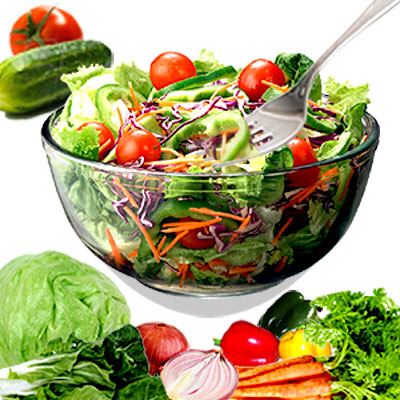 Food and Nutrition Facts
Food and Nutrition Facts Chamomile
Parsnip Soup
Dim Sum
Gazpacho Soup
Whole Grain Cereal
Jicama Nutrition
Bok Choy Stir Fry
Chia Seeds Benefits
Teff Nutrition
Kaniwa
Flax Seed
Wheatgrass Benefits
Kelp Benefits
Types of Chili Peppers
Medicinal Benefits of Pomegranate
Arugula Leaves
Maca Root
Pitaya Fruit
Benefits of Celery
Leek
Asparagus Benefits
Oyster Stew
Oyster Mushroom
Lupin Beans
Quinoa
Freekeh
Extra Virgin Olive Oil
Dill Pickle
Sauerkraut
Fat Burning Foods
Nutrition Chart
Food Combining
Calorie Counter
calories ...
Non Alcoholic Beverage
Punch Recipes
Food Label Nutrition
Homemade Sausages
Cooking Steak
Eating on a Budget
Budget Friendly Recipes
Quick Recipes
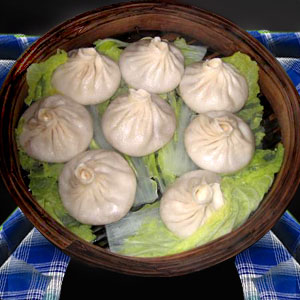 Healthy Packed Lunch
Healthy Packed Lunch Overnight Oats Recipes
Eggplant Casserole
Brunch Recipes
Burrito Recipes
Muffin Recipes
Cupcake Frosting
Apple Crisp
Stir Fry Cooking
Seafood Salad Recipe
Cooking Corn on the Cob
Finger Food Recipe
Sandwich Recipe
Bread Stuffing Recipes
Easy Chili Recipes
Picnic Recipes
Edible Mushroom Recipes
Mushroom Soup Recipes
Dip Recipe
Tapas Recipe
Corned Beef Recipe
Canned Salmon Recipe
Tilapia Recipes
Crumb Cake
Flourless Chocolate Cake
Regional Food
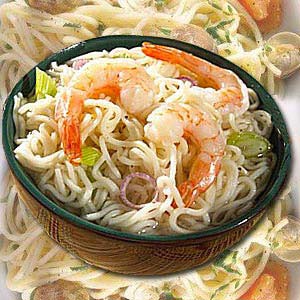 Lasagna Recipe
Lasagna Recipe Peruvian Ceviche
Chinese Food Recipe
Vietnamese Food Recipe
Malaysian Food
Korean Food Recipe
Indian Curry Recipe
Edible Rice Paper
Mexican Food Recipe
Quesadilla
Guacamole Dip
Italian Food Recipe
Spanish Food Recipe
Kosher Food
Falafel Recipe
Tandoori Chicken
Noodles
Canape
Couscous
Meatloaf
Chowder
Gumbo Recipe
Crockpot Recipes
Moroccan Food
Healthy Food
Pre Workout Snack
Matcha Tea
Simple food Swaps to Lose Weight
Foods to Beat Stress
Foods to beat Insomnia
Bone Density Foods
Prebiotic Foods
Kefir Grains
Agave Nectar
Spicy Trail Mix
Pesto Sauce
Homemade Hummus
Crab Cake Sauce
Bamboo Shoots Nutrition
Lemon Grass Plant
Butter Beans Recipes
Loose Green Tea
Seaweed Nutrition
Healthy Food
Low Fat Granola Bar
Steel Cut Oatmeal
Fruit Pizza
Pizza Toppings
Green Smoothie
Healthy Meal Planning
Delicious Mealtime Recipes
Heart Healthy Fats
Healthy Heart Recipe
Healthy Dinner Recipe
Healthy Dessert Recipe
Healthy Fast Food
Healthy Kid Recipe
Probiotic Food
Diabetic Friendly Foods
Fruit Salad Recipe
Bread Pudding
Tofu Recipe
Oat Bran
Broccoli Salad
Avocado Recipe
Iron Rich Food
Brain Foods
Antioxidant Food
Natural Diuretic
Low Fat Cooking Tips
Rice Pilaf Recipe
Low fat Chicken Recipe
Food Tips
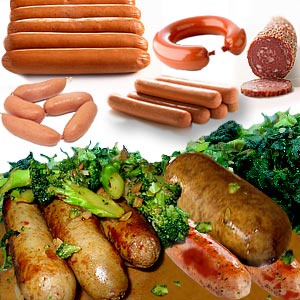
Sous Vide Cooking Technique
Natural Sugar Substitute
Stevia Sugar Substitute
Sunflower Seeds Nutrition
Bouquet Garni
Cake Decorating Tips
High Satiety Foods
Thanksgiving Dinner
Safe Food Storage
Frozen Food Storage Tips
Cold Storage Food Tips
Leftover Recipe
Food Pyramid
Dairy Free Food
Microwave Cooking
Food Intolerance
Homemade Ice Cream
Apple Cider Vinegar
Benefits of Honey
Beverage Cooler
Food Poisoning Symptom
Food Allergy Symptom
Food Addiction
Top of the Page: Sunflower Seeds Nutrition
Popularity Index: 101,002

